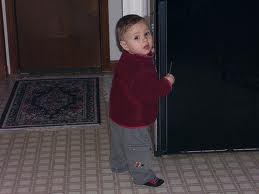
Learning to Learn
The mind is a trap; it grabs and holds onto countless bits and pieces of information. The volume continues to grow with every experience we have as our mind identifies, classifies, organizes and synergizes every little tidbit of every aspect of them. This process is something we refer to as learning, which we describe as:
“Learning is the lifelong process of transforming information and experience into knowledge, skills, behaviours, and attitudes.” (1)
The above definition will suffice for this discussion. When I read it the first thought that occurred to me was “how do we do this?” Part of the answer is contained in the definition itself; that word being “transforming”. The idea of transformation is change, and change is learning.
We are all continuously learning whether we realize it or not. While many tend to consider learning only in terms of such things as gaining direct knowledge about how to do something, learning facts, or about a topic, we learn far more than that, this is only a small subset of what we learn. For example, we also learn to believe certain ideas, to like certain things and avoid others and we learn such things as trust and fear.
By this composition, I am not attempting to write a definitive essay on all aspects of learning or to delve into the neurochemistry of our brains. I only seek to make you aware of learning in a way that I believe you can take advantage of to foster your own. By this, I mean that we will examine how our Rational Mind (RM) learns and factors that affect our learning.
The vast majority of our learning activities occur at the non-conscious level, which means we are not aware of all that our mind is doing on our behalf. This may lead one to believe that the more we know what our minds are doing the better off we are; however, we do not need to know everything that it does in order to become better at learning. The mind works with imagery, so we will take a figurative approach.
We change as we learn, regardless of what we learn; therefore, when we want to become better learners, what we benefit from the most is gaining an understanding more about how our mind goes about doing this. Assuming one has the intent and desire to learn, we can gain a greater understanding of how we learn by delving into our thoughts. The same ideas apply whether we are dealing with book knowledge, a physical skill or seek to develop our non-rational awareness or what some would term psychic abilities.
So, how does our RM learn? I have spoken at length, in various essays, about the nature of rational mind (RM) and that it is comprised of thoughts of various types and complexities. I have also spoken about how the RM integrates experiences; it is through this process that we learn. Learning is the result of the manifestation of new thoughts or changes to existing one.

In the essay “Paying Attention to Our Attention” (2), I gave an overview of what I referred to as the Experience Reaction Sequence (if you have not read it I suggest that you do before continuing). In it, I mentioned “Our RM sorts through the thoughts it has about its reaction to the experience. The basis our RM uses to determine what is important to pay attention to is what it has learned from the past.”
When we have an experience, we react and our RM tries to make sense of what it experiences. Existing thoughts that “match” the experience activate and we manifest new ones. The experience activates existing thoughts due to commonalities between the experience and thoughts we already have. Imagine a field of tuning forks and the experience as a note or chord, all tuning forks that can resonate to the note will do so.
When the resonance is strong, we have a good match, when it is not our mind still tries to interpret the experience. We manifest new thoughts by the process of integration, which is very similar to integration as found in mathematics. What I mean by this is that when our minds have no existing thoughts with “resonate” with the experience it uses thoughts that have a commonality with it to try to understand what it experienced. For example, when we see a car that we have not seen before we will still recognize the vehicle as a car because it exhibits the properties we associate with a car. If what we see lacks many of the attributes of a car, we might not recognize it as one.
In this case, the activated thoughts do not share enough commonality to be a match. Our minds will then try to use the strongest ones to make sense of what it experienced. If it determines that there is a strong enough correlation between these thoughts and the object, it will then create a new virtual thought out of these. If it cannot find enough commonalities, it will not be able to process what it experiences. It still may create a thought, but it will be a tenuous one.
As an example, when I was around five years old, my father replaced the clip catches on the kitchen cupboards with magnetic ones. I remember when he did this and after he left, the puzzle of how they worked caught my attention. I did not understand magnetism, hence I had no idea what kept the cupboard door locked in place. I pulled the door open and then pushed it in, and it held, I then pulled it open and slowly closed it and felt the pull of the magnet that drew it closed.
I did this for a while before realizing I could not see what was going on so I got a flashlight, put the things in the cupboard on the floor and then crawled in with a flashlight so I could see what was going on. I was unable to determine how it worked. Certainly, I knew about catches, but had no idea about magnets. The entire mechanism remained a mystery to me. I even asked my dad, but his explanation only gave me more questions and no answers. My mind created a thought about the magnetic clips, but it was not something I could articulate, it was a mystery force. I did learn about it before too long, but only after I had grasped enough new concepts that my mind could create the thoughts it needed to understand how it worked.

Integration also includes processes our minds use to create secondary linkages between thoughts. This occurs at different levels, though once again, the basis for the linkage is commonality. For example, at one level our mind group’s objects that share similar properties, such as roundness, colour, taste, feel and so on. At another level, it may create a grouping such for related properties such as containers, bindings and clothing and at yet another level add further groupings such as containers for liquids, winter clothing and so forth. This happens mostly at the non-concious level, that is we are not usually aware when or how our mind made the connection, it just does. This means that we can do this consciously by feeding our non-conscious mind ideas and thoughts that it will process it for us, thus training our mind to be a better tool for learning.
In terms of the types of thoughts we have, it is very difficult to create a list of all possible levels of groupings, though one can do so in a general sense as follows:
- Atomic and simple thoughts – these are thoughts that do not require any pre-existing thoughts or a minimal number of atomic thoughts. This would apply to such thoughts or actions as red, curve, hard, cold, grab, reach etc.
- Composite thoughts – these are thoughts that contain any number of atomic or simple thoughts and would be those such as such car, table, chair, container, equation, baseball, organization, magnetism etc.
- Conceptual thoughts – these are thoughts about thoughts such as beliefs that people with long hair cannot be trusted or I have faith that I can accomplish anything.
- Root constructs – this would apply to such as harmony, peace, consciousness, self
What varies between these thoughts is not just their complexity; it is also their type or the plane of energy of the thoughts. The more complex the thought the more facets it must have to represent it. In mathematics, this would be synonymous with degrees of freedom. An equation with three dimensions can represent a 3-D object, hence it has more degrees of freedom than a quadratic equation, used to represent curves, which in turn has more degrees of freedom than a linear equation that represents lines. Hence, lower order thoughts are simple thoughts with less facets than higher order thoughts used for conceptual or root constructs thoughts.
With this understanding of how the mind works, that is the processes by which it learns (integration of new thoughts), we can begin to apply this to learning. Since our RM consists of thoughts of various kinds, our understanding more about thoughts, the kinds we need to enable learning and how they interact can be of benefit.
There is one additional wrinkle in this and that is our thoughts are “tied” to our emotions; that is to say a thought, depending on its nature, triggers an emotion. We will also look at this aspect and how we can become restrict our learning through our resistant to experiences that make us uncomfortable, trigger fears and so forth.
There are many elements to learning; we will examine a few key ones, which are:
- Intent and desire
- Exercising the mind
- Imagination
- Curiosity
- Type and breadth of thoughts one has manifested and uses
- One’s emotional state and the type of emotional energy “manifested” by our thoughts
- The nature of blocking thoughts and filters
- Reinforcement
None of the points listed above act in isolation. Our RM is essentially a tapestry woven with all of them. While they are all important, the most fundamental ones that affect our ability to learn are our intent and our desire. That is we must have the goal of learning something and the desire to make it happen. These alone are not enough for us to learn, but without them, we will have little success in learning something we have chosen to learn.
In addition, if when we start to formalize our intent and desire (6), we are telling our RM that we want to learn, that it is important and valuable to us. Do not underestimate the importance of this as an enabling thought form. If you do not intend to learn, you are telling your mind that it really does not matter and as a result, it will continue to do as it has, it will use existing thought forms rather than build new ones.
The mind, like any other muscle in our body, requires regular exercising to be able to take on learning. There are many excellent ways to keep your mind alert, the bottom line being one must use it. Two key elements keep the mind fit, one is reading which keeps exposing it to ideas that it must integrate and forces it to function at an elevated rate and the other is to challenge ourselves by reading, exploring new ideas and playing mental games that force us to think rather than go by what we already know.

When we are young, the mind integrates thoughts at an amazing rate. We are building our mental house. Everything is new and exciting and the mind manifests new thoughts and new relationships between them continually (3). Many of these relate to our physicality, developing our manual dexterity, mapping and naming the world and ojbect around us, coordination as well as identifying and remembering terms and definitions. This keeps our minds actively manifesting new thoughts. The rate at which this occurs tapers off over time because once we have a larger pool of thoughts to draw on our experiences, and encounter less “newness” in our experiences.
This is offset, somewhat, during our teens and into out twenties because we start to integrate existing thoughts into new structures. This is why we do not get sarcasm or irony until we are a little older as such ideas requires us to have a mental house to work with as one must be able to compare and reflect to get such ideas as sarcasm and irony.
Another key element is the use of our imagination. It is through imagination that we stretch our mind. By doing this we step beyond what we know and are not so reliant on existing thought forms. We do not learn by using thoughts we already have, we only learn by manifesting new thoughts even ones that connect existing ones in new ways.
Consider your mind as a house, and if you only live in one room everything is familiar, everything is known and there is no learning. Imagining builds new rooms for our minds to play in. This is critical if one wants to learn and if we are not learning, are we not simply existing? Using our imagination, similar to formulating our intent and desire also grants our mind permission to go beyond its comfort zone, it gives us permission to dare and to dream both of which are enabling thought forms. Enabling thought forms affect other thought forms and create new webs of them, or using the analogy of house, new pathways between rooms.

As I mentioned, in order to empower ourselves to learn, we must step outside the bounds of our mental box. We tend to use the same thoughts, or ones that are similar repeatedly. There is that certain comfort we develop for the familiar; however, we let our mind get into ruts this way and we become accustomed to them. Stepping outside them can be frightening, yet it is by doing this, by stepping outside our comfort zone and exposing ourselves to unfamiliar ideas and experiences, that we force our mind to integrate them. In doing so we add more rooms to our mental house as a result of the new thoughts and also because the mind has to deal with any conflicts raised with existing thoughts. Old notions can be challenged and modified this way. Doing so also helps the balance of our house. By telling our mind that we are willing to learn we expand our ability to open up to new ideas.
The other quality that goes along with imagination is curiosity. Desire provides the fuel for our curiosity. Fostering our curiosity disarms fears and enables possibilities. To be curious is to want to know something we do not know now. It gives us the power to explore new ideas, concepts, and places and so on. If our curiosity is strong, it can override thoughts that might otherwise hold us back. A curious mind is an open mind, one that is less concerned about risks and more interested in opportunities. This is a powerful enabler for many reasons. If we have this thought our attention is less focused on what we know or have experienced in the past and more on what we can experience in the present.

The mind pays attention to the most energized and empowered thoughts, as these tend to manifest stronger emotions. If the thoughts are “negative”, they will manifest lower emotions that inhibit learning. Nothing sabotages our learning process more than negative thoughts about learning, or negative thoughts in general. You must believe that you can learn. Tap into your intent and desire. Along with this, consider that since you are capable of learning some things and they have helped you, that learning per say cannot hurt you. Make this thought important and reinforce it.
Note, and I realize this goes without saying, strong negative emotions are disruptive and reduce our ability to concentration. Be aware that you will be open to learning the most when these are at a minimum. If you need to study and find this occurring make sure to ground yourself. You can also work on the thought(s) that gives rise your emotions, assuming you know what it or they are. Put it aside for the moment if you can. Tell yourself you will be scared later, or that there is nothing you can do about it now so it can wait (unless it is life threatening).
You can also take the approach of enabling learning by thinking of it as something fun to do. You have the intent, and the desire, it only seems natural that we should also enjoy it. Focus and hold onto this thought, make it a strong one. Do not think about learning something in particular as enjoyable; think that the act of learning itself is fun. Finding joy and pleasure in learning improves our learning capability. Laughing is certainly a way to depower negative emotions as well. Laughter goes hand in hand with joy, and fewer things spur us on more.

A large portion of the ideas above relate to resolving limiting or blocking belief thought forms. The rigidness of our thought forms is in no small part a consequence of how firmly we believe our “truths”. When any of our truths become fixed things, unchangeable then any truth is potentially so. This makes learning more difficult. We can get around this by never assuming we know anything for sure, and that what we know is subject to change. Do not see personal truths as immutable; see them in terms of likelihood and assume, no matter how much you believe something to be true, it may not be. Reinforce this thought form, this way you will also be more open to new ideas, to stretching your minds capabilities further, even if it is little bits at a time. Remember the power of one thought can be immense (5).
They say, and with good reason, that our retention goes up significantly if we review something we have learned within a few hours after doing so. We have many thoughts in our heads, and if we want a new thought to remain active, using it again is one sure way to do so. We make a thought form stronger and more vibrant by paying attention to it. The more vibrant it is the more readily it we can access it. Further, the fewer thoughts we have the more attention the mind pays to each of them. This also serves to reinforce any associated thoughts, drawing more of our thoughts into our attention which further strengthens the power of these thoughts.
I mentoined at the beginning that much of learning happens at the non-conscious level. All of the above points will direct some of this type of learning without us having to figure out how it happens. Webs of thoughts will be changed and modified in such a way as to make our minds less rigid and more open to possibilities. This is one way we train our minds. We enhance learning by having simple clear thoughts about learning, and the benefits and pleasures of it. We boost this further when we are able to focus during the times we are learning. These ideas helped me immensely when I went back to school after spending six years away. I found that learning was easier when I did these things, though at the time I certainly did not think in any detail about why or how they did so.
Anyone can learn, and we can prepare ourselves to do so. It is not magic; it is simply taking advantage of our knowledge about what our mind is and how it works. Too many people become concerned over whether they can learn something or whether they are smart enough to learn. This can sap ones desire to learn. Everyone can learn, regardless of their age. Certainly, some topics require a fair amount of knowledge to grasp fully, such as quantum mechanics, or advanced mathematics but that does not mean you cannot do so, if you choose. You may have to learn other things first, learn the foundation elements, but you are still on a learning path. All we need to do is empower the right kind of fundamental thoughts that make learning easier and you are on your way.
© 2011 Allan Beveridge
References:
